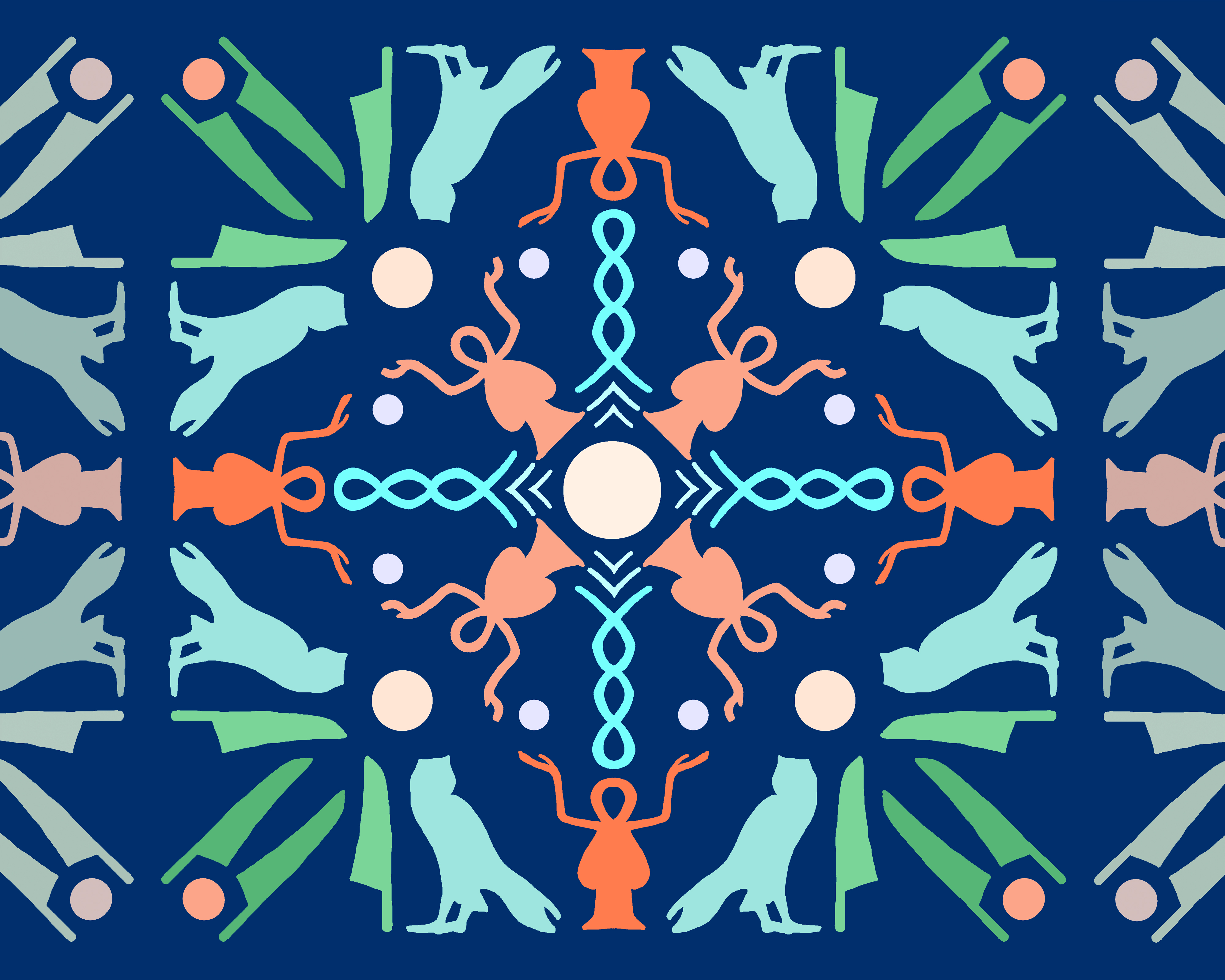|
Again I take Egyptian concepts into an mandala based exploration.
It began with noticing composite glyphs while enjoying "konde's" photo albums of lovely things she's seen in museums.
The sarcophagus of Ankh-Hor, from the Late Period, (ca. 664-332 BCE) has an unusual Tyet-ka glyph:

Detail of sarcophagus, Neues Museum, ÄM 41
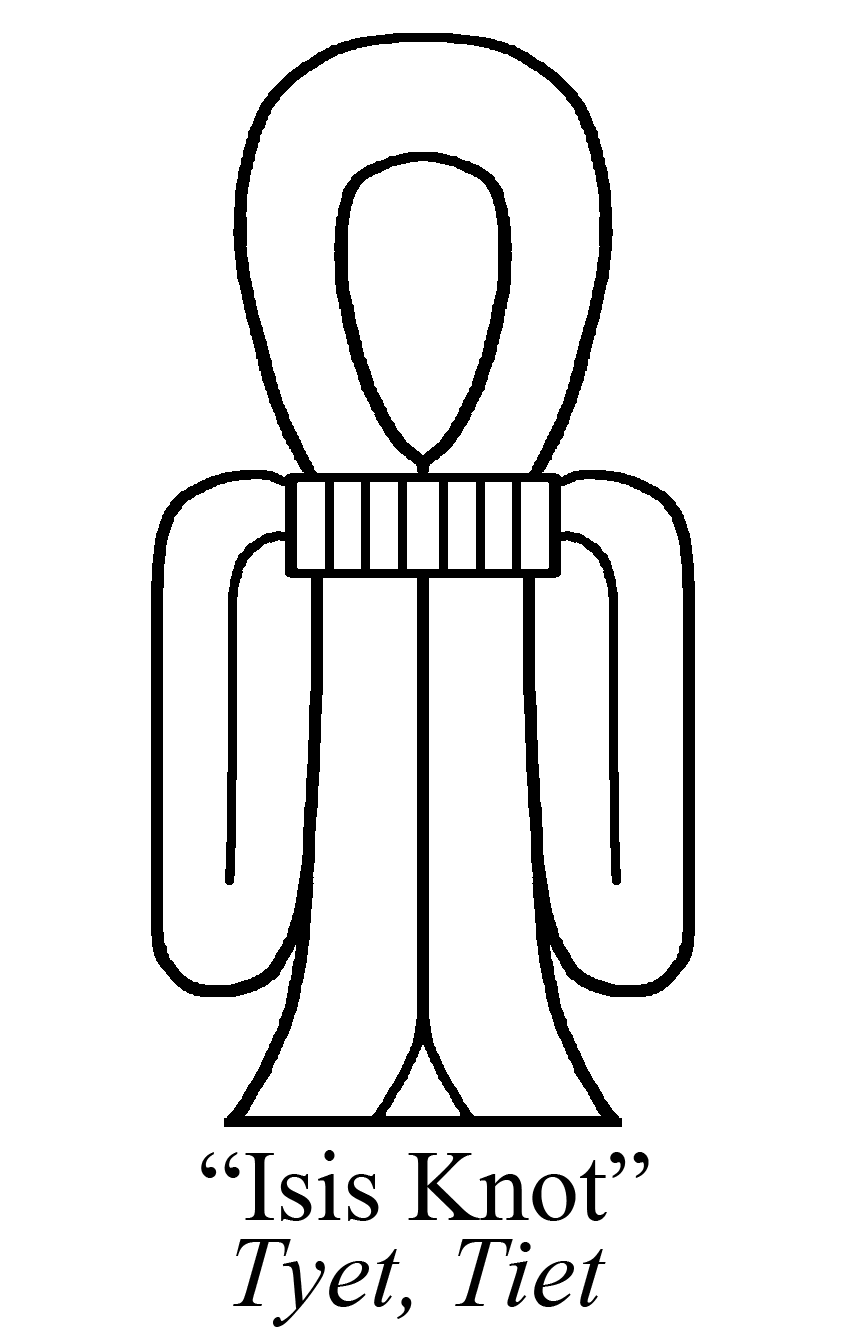
Tyet glyph by itself...
"The exact origin of the Isis knot is unknown, thought initially this sign was perhaps a variant of the ankh (S34) which it resembles closely, except that its transverse arms are curved downwards. In written sources the meaning and symbolism of the tiet seem to be similar to those of the ankh, and the sign is often translated as 'life' or 'welfare.'" (Richard H. Wilkinson, Reading Egyptian Art, (Thames & Hudson 1994), page 201.)
No doubt this combined symbol was placed on Ankh-Hor's sarcophagus to help ensure he could sustain his life force.
I first took this imagery and put it into a black and white mandala:
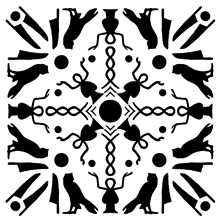
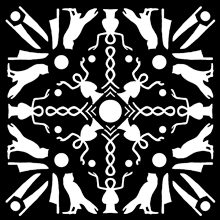
I inverted it and made it into a version for 8x10
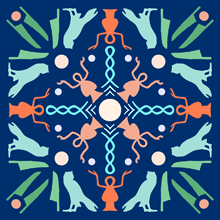
Julia suggested coloring it, which got me experimenting
 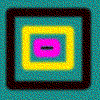

|
